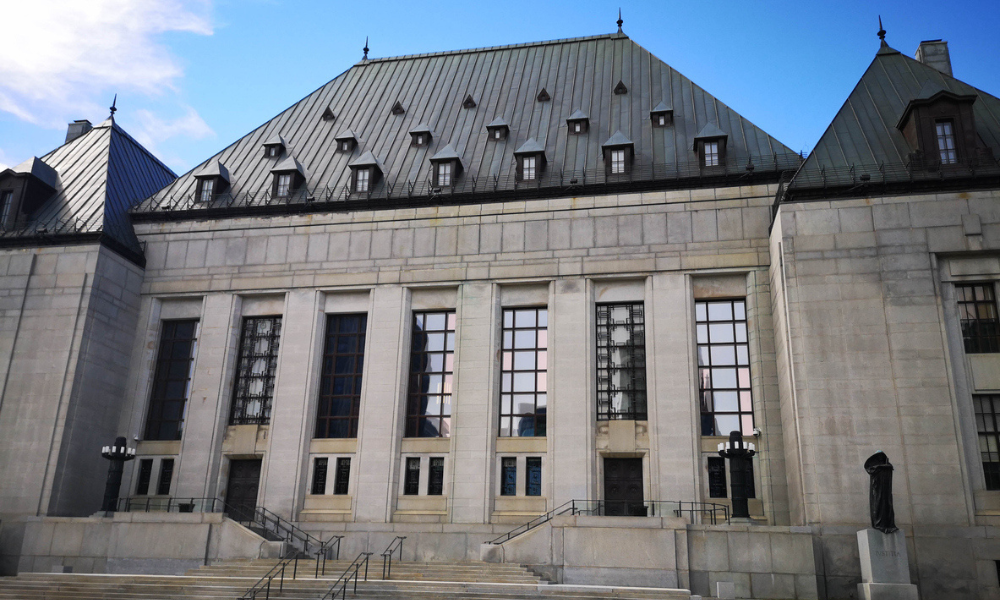Agreement approved for First Nations Child and Family Services and Jordan's Principle class action

The Federal Court of Canada’s approval of the $23.34-billion First Nations child and family services settlement agreement illustrates that if the government decides to fund public services in a manner that creates substantive inequality, then the courts and human rights tribunal will provide a remedy, says David Sterns, a lawyer at Sotos LLP who represented the plaintiffs.
The agreement compensates Indigenous children and families for the discriminatory underfunding of the First Nations Child foster care system and other family services. The settlement is the largest in Canadian history. It follows a Canadian Human Rights Tribunal ruling in 2019, which ordered the federal government to pay $40,000 to each affected child and family member – the maximum penalty for discrimination.
“It's a historic day for First Nations children and their families,” says Sterns. “It's been a long, drawn-out proceeding. We're now starting the final chapter, which is getting much-needed compensation into the hands of the youth and the families who suffered under a discriminatory system… There's a lot of work ahead.”
He says the next stage is an essential part of the class-action process. Sterns and his colleagues must devise a method of distributing $23.34 billion to 300,000 people. He says the method must be culturally appropriate, non-invasive, trauma-informed, and include sufficient safeguards so the money flows to the right people. They are working with the administrator, Deloitte, a team of navigators, and other experts on the distribution process.
“The work doesn't end when you have a settlement approved. Actually, sometimes the hard work begins.”
Along with Sotos, the law firms Kugler Kandestin and Miller Titerle + Co were also on the case. They are also working with Nahwegahbow Corbiere, Fasken, and in-house counsel at the Assembly of First Nations, including Stuart Wuttke.
The case began in 2007 when the First Nations Child and Family Caring Society of Canada and the Assembly of First Nations brought an application to the Canadian Human Rights Tribunal. The applicants argued that the Aboriginal Affairs and Northern Development Canada’s First Nations Child and Family Services Program discriminated against Indigenous children and families based on race and/or national or ethnic origin by insufficiently funding those services on reserve and in the Yukon.
“The way that they were discriminating was that they were prioritizing the removal of children whenever there were problems within the household of those families living on reserve,” says Sterns.
Instead of directing funding toward helping families stop the neglect that was found, he says, the First Nations Child and Family Services Program frequently removed children, placed them in foster care, and the foster family received the funding to provide services to the child.
“That set up a perverse incentive for the welfare agencies to remove the child because that was the only real tool in their toolkit. There was no money for prevention and for supports.”
Sterns says this dynamic led to an epidemic of Indigenous children being moved off reserve to the extent that it impacted almost every family. “It has contributed to the depopulation of reserves. It's contributed to the loss of culture. It's contributed to the breakdowns of families,” he says.
The tribunal ruled in the applicants’ favour in 2016, and a funding decision in 2019 awarded the maximum available under the Human Rights Act. The decision only covered class members affected in 2006 and after, so a second class action was launched to cover those impacted as far back as 1991.
In the second class action, the plaintiffs sought compensation on the same $40,000 basis and argued for enhanced payments for those who had suffered more significant harms, says Sterns.
“This is an important case of Charter rights and remedies.” He says it recognizes that funding decisions, which have traditionally been viewed as within the exclusive prerogative of Parliament, are subject to human rights or Charter scrutiny. Sterns adds that the case has also led to behaviour modification because the system is being “dramatically reformed.”
“It’s going to result in food on the table and shelter over the heads of a lot of people who are living in extreme poverty.
“That’s what this system has created,” he says. “That is why there are so many homeless First Nations children. To a large degree, it's the result of a child welfare system that tore them away from their families.”










